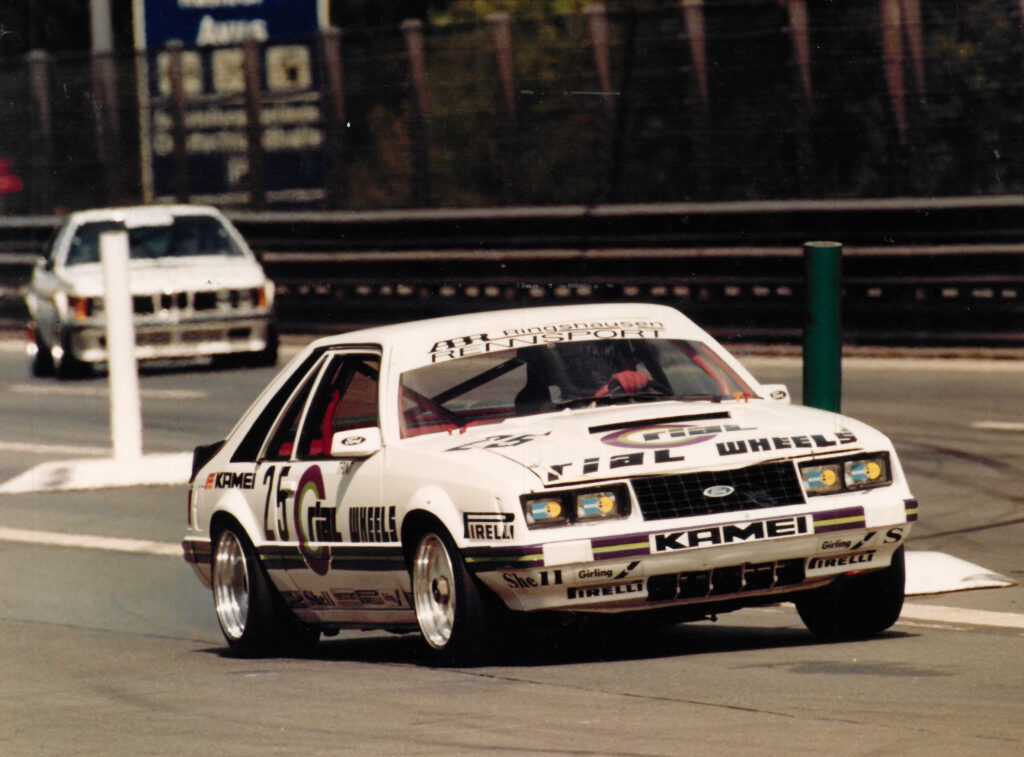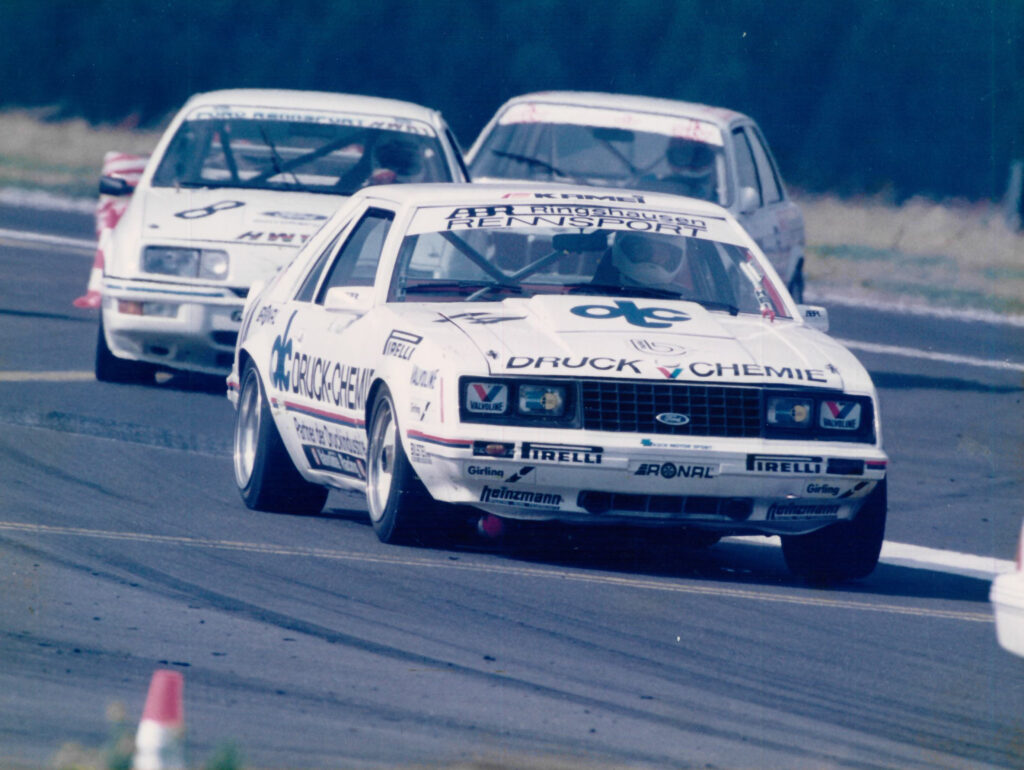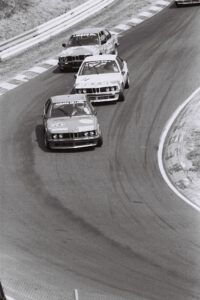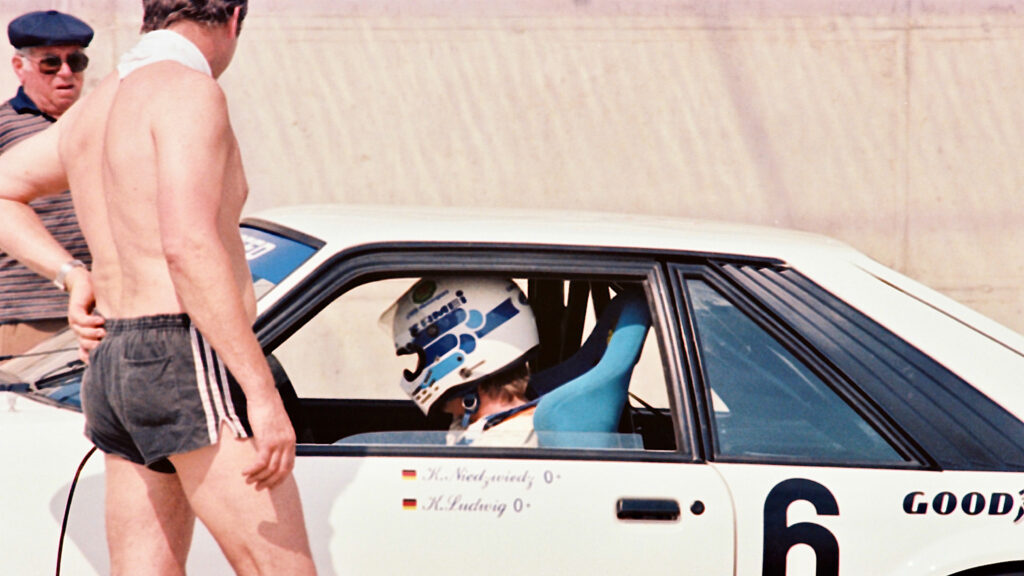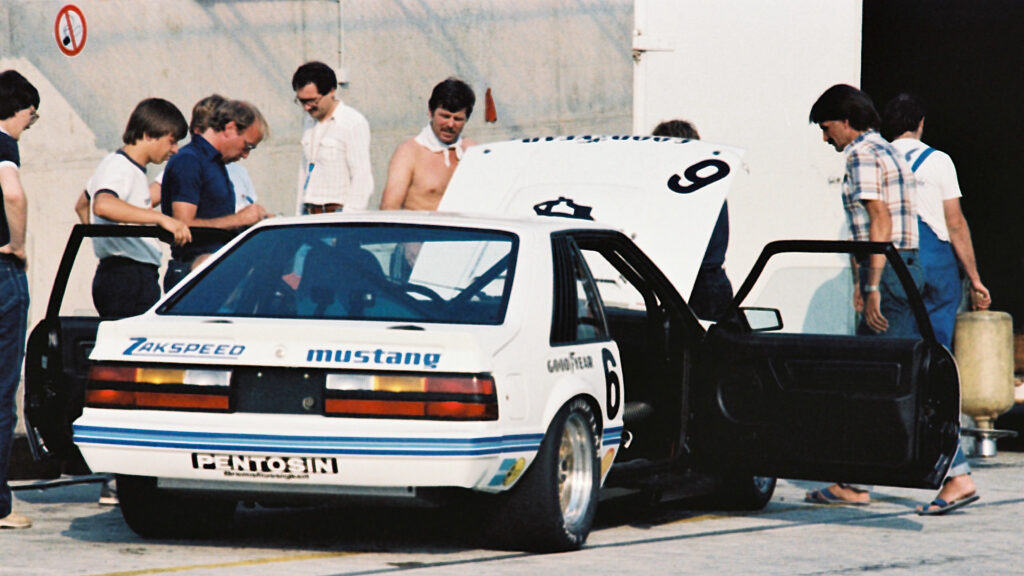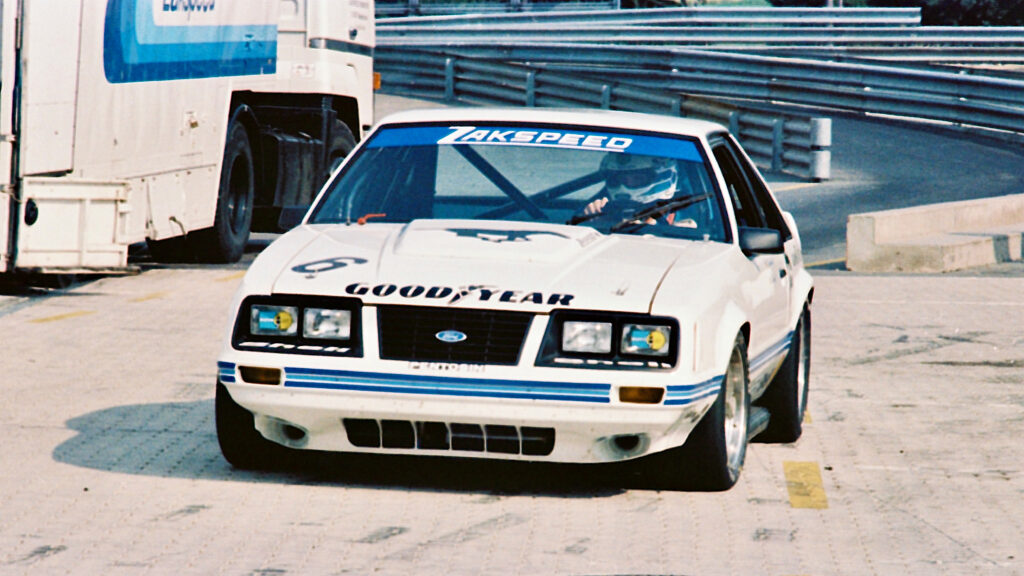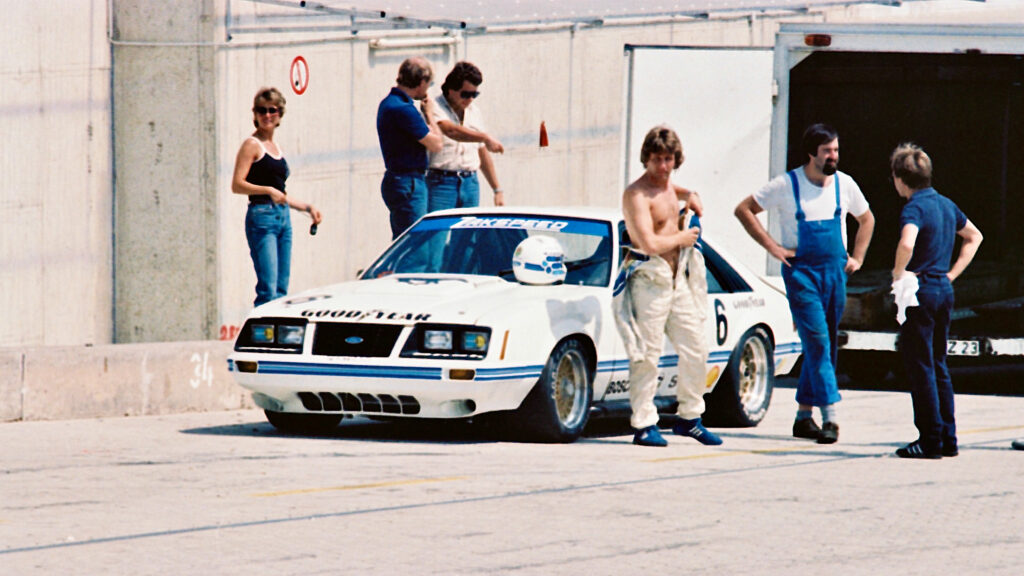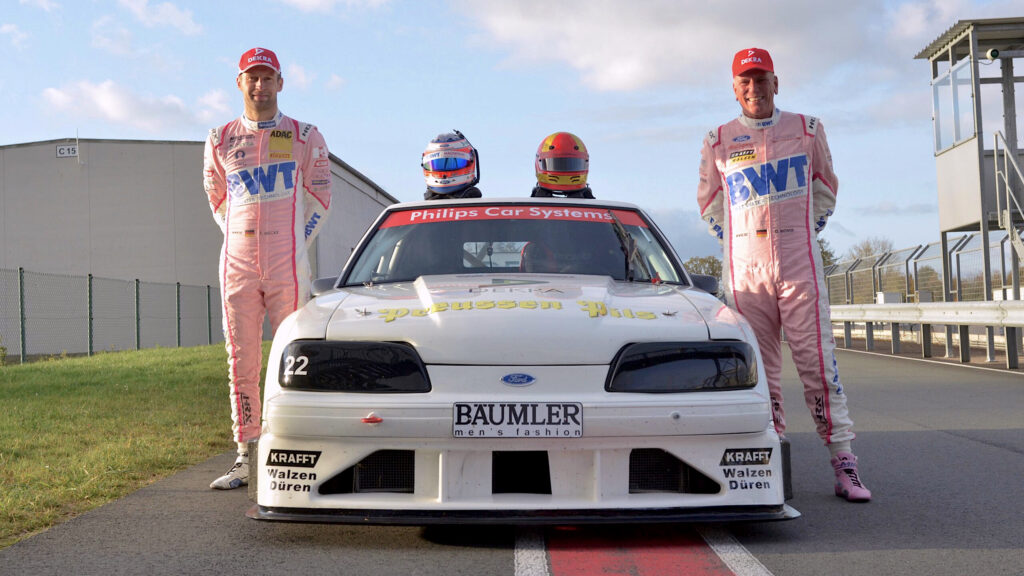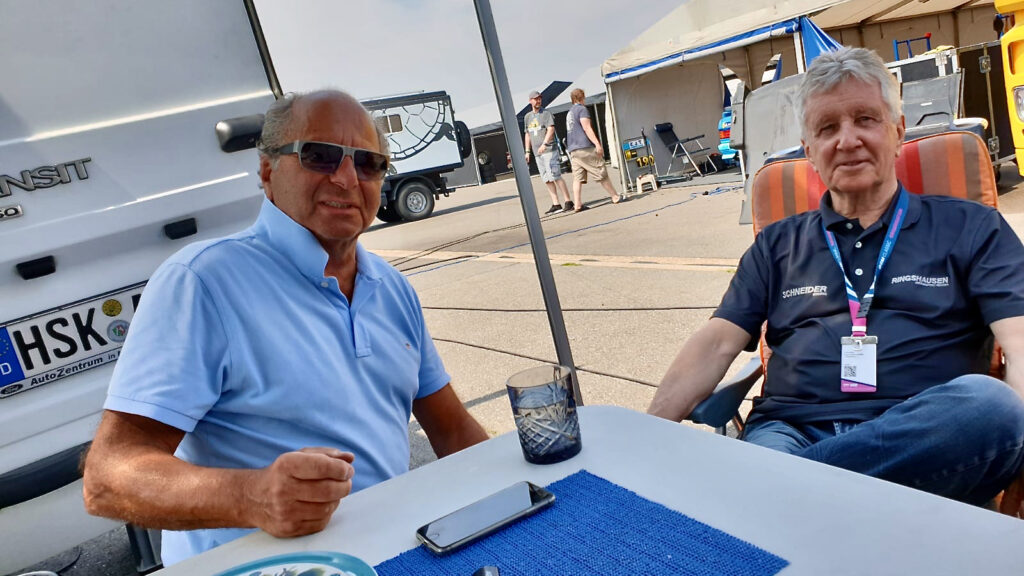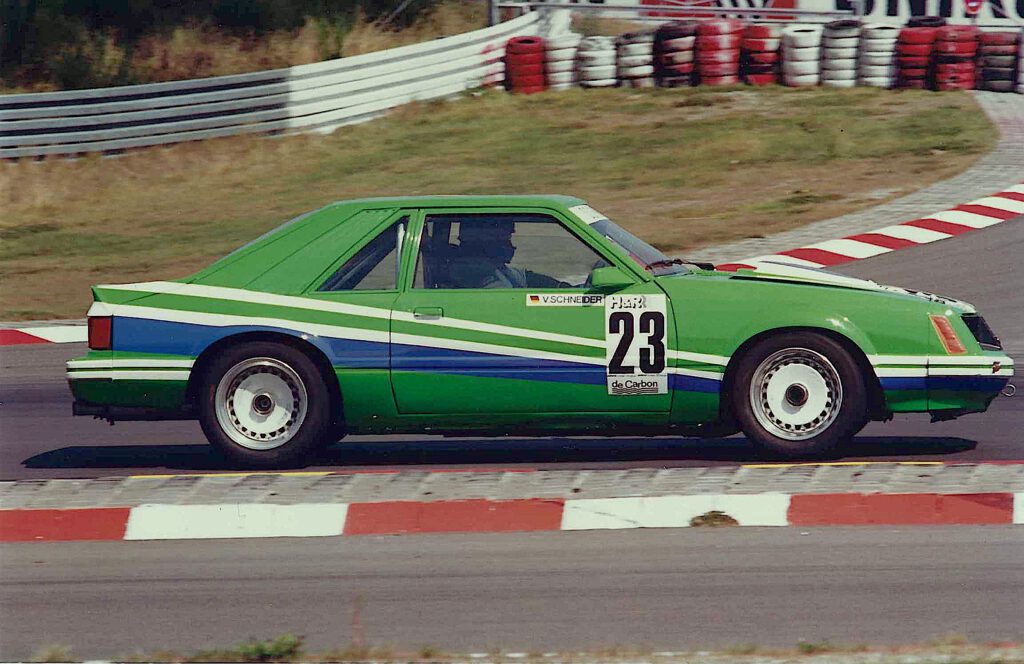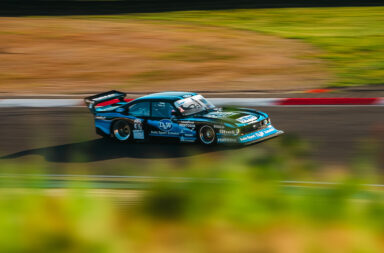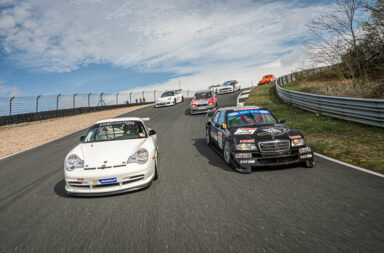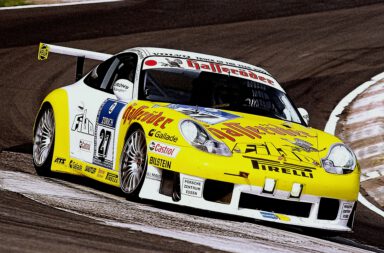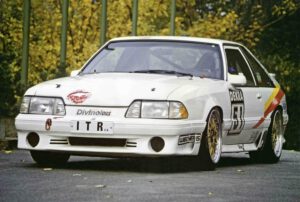
© Carsten Krome Netzwerkeins
The Ford Mustang GT 5.0 Group A set a lone record. No other racing touring car has been active in the DPM and DTM longer than the US coupé with the eight-cylinder engine that initially produced 350 hp. In the very first season of the German Production Car Championship, which preceded the DTM in 1984, two examples from the Butzbach-based Ford dealer Bernd Ringshausen took part. The career of the Zakspeed Mustang Group A began even earlier, with which Klaus Niedzwiedz gave a foretaste of the future touring car league in the midsummer of 1983. 38 years later, “Niedzwiedz” returned to the Mustang cockpit at the Norisring – initially just for an interview at the old workplace. The (time) journey has only just begun, even if the DTM Classic season has come to an end, at least for this year.
Sunday, July 10, 1983, Touring Car Grand Prix: The future of production car racing begins on the Nürburgring-Nordschleife. It has long been recognized that the costs of Group C, which was newly introduced on the world market in 1982, will not have to be borne at national level. The economy is in a recession, the endurance world championship alone can raise the budget for the futuristic prototypes. The German Racing Championship, which was still flourishing until 1980, fell to the ground. Only a handful of racing cars now take part in the former elite championship. The motto is: back to being closer to the series, down with the sprawling budgets! Group A touring cars are considered the new royal road. The BMW motorsport department bills 150,000 Deutschmarks for a 635 CSi that competes for victories in the European Touring Car Championship with Jaguar and Rover. At the home race on the Nürburgring, after a six-hour battle, the Schnitzer copy of the works drivers Manfred Winkelhock and Dieter Quester prevailed. Jaguar drivers Tom Walkinshaw and Chuck Nicholson recorded the fastest lap in 8:02.44 minutes. However, the twelve-cylinder coupé does not hold out in the race, the BMW in-line six-cylinder proves to be more resilient in the unusually high temperatures.
Just two days later, the reference lap times presented are an issue again. The Zakspeed team came from the nearby Niederzissen to the grandstand T13 to move into the temporary pit system of the Nürburgring-Nordschleife for a test Tuesday. Erich Zakowski arrives with the contract drivers from the German Racing Championship, Klaus Niedzwiedz, his namesake Klaus Ludwig and the young talent Jörg van Ommen – and with a US Ford Mustang. Tuner Jack Roush gave the five-litre eight-cylinder engine 320 hp to start with – enough to convince potential customer teams? In any case, Erich Zakowski is taken with the idea. After the expiry of the previous regulations at the end of 1981, the master maker, who was born in East Prussia, is urgently calling for a successor for the successful Escort and Capri of his customers. The Butzbach-based Ford dealer Bernd Ringshausen, for example, would like the same, as he is bringing two older Escort BDA to the start for the Swiss Walter Nussbaumer and the Saarland Ford test driver Dieter Selzer. Although the latter drove from victory to victory in the 1983 German Racing Trophy, the signs point to change here too. Because as early as 1984, according to the plan, the lower house of the racing championship, which was launched four years earlier, will no longer take place. As a brand change is out of the question for Ringshausen due to his ties to the Ford works, he, like Erich Zakowski, is interested in a new racing machine.
This does not necessarily apply to the Ford factories themselves. With the Englishman Stuart Turner, a new sports director was appointed in 1983, who is stopping all activities in favour of the upcoming Sierra XR4ti. And in Germany, the national Ford race director Lothar Pinske complains that the Mustang is not always imported straight from the United States. Be that as it may: Thanks to his good relationships, Zakowski manages to direct a ready-to-race Mustang to the Nürburgring and even set a price. The youngest horse in the stable should already cost 150,000 Deutschmarks, according to the message that was launched shortly afterwards in a test report in the trade journal auto, motor und sport. What is still missing is the proof that the V8 bolide is also competitive. Klaus Niedzwiedz, who only sits behind the wheel and is preparing for his first race at the Hockenheimring on behalf of the sponsor GWB joint shaft construction, thinks of a ruse. He knows that some observers would be posted above the fast double right in the “Flugplatz” section of the route. So at the lowest point of the approach he briefly takes the gas off in order to be able to accelerate fully to the highest point and to be able to drive past the amazed audience under full load – without large aerodynamic downforce at the rear, only held by a tiny spoiler lip on the trunk lid. “Some gentlemen were amazed,” he says happily 38 years later. The reference lap time achieved: 8:06 minutes. At the Touring Car Grand Prix, this performance would have been enough for the fourth row on the grid straight away.
Only a few weeks passed from July 12th to August 7th, 1983. During this time, the Mustang takes on the GWB sponsor look of the Zakspeed Ford C100, sorry, C1 with which Klaus Niedzwiedz competes in the German Racing Championship. At the German Grand Prix at the Hockenheimring, an event of sporting historical value is emerging. As part of the Formula 1 World Championship, two pilot projects are to show the future of production car racing. Andreas Meyer from the organizing AvD skilfully pulls the strings. On the one hand, he brings the French touring car championship, or NOSCAR for short, to a guest appearance with German participation – Hans Heyer, for example, on a Chevrolet Camaro from Belgian tuner Serge Baenkens – in the neighbouring country. On the other hand, top-class players like Enzo Calderari and Tom Walkinshaw with works Jaguar XJS Group A from the European Touring Car Championship or Jörg van Ommen with a BMW 635 CSi Coupé in the German Racing Trophy in the Grand Prix of touring cars make an out of competition, as well as Klaus Niedzwiedz at the racing premiere of the Ford Mustang. In both practice sessions, the Dortmund driver set the best time, once with six tenths of a second ahead of Calderari, once with two seconds ahead of Walkinshaw. After the 15-lap race has been approved, Niedzwiedz immediately sets itself in the limelight – and in addition to the superior Ticino in terms of performance with the twelve-cylinder Jaguar. However, the Confederate then uses the extra power of the Jaguar and pulls away, while the US Ford falls back to fifth place after a scuffle. With misfires and 500 revolutions per minute less, the debutant can be happy to cross the finish line in second place. Conclusion: Successful debut, potential shown in the best possible way in front of a large backdrop. And how should it go on now?
The eagerly awaited premiere of the German Production Car Championship takes place on March 11, 1984 in Zolder, Belgium. From the start: the Ford dealer Bernd Ringshausen from Butzbach, who switched from the Escort BDA group to a Mustang GT 5.0 that he built himself. As before at Zakspeed, the engine is supplied by US tuner Jack Roush, the Moers flight captain Manfred Trint is the pilot, and rim manufacturer Rial from Fußgönnheim in the Palatinate is the sponsor. The German champion of the Formula Super VW 1973 succeeded in four great race victories straight away, but Volker Strycek managed to win the title without a win. In the coming year, Roland Asch will take over the Mustang cockpit, secure a second place on the Berlin Avus, but won’t win any more races. His balance at the end of the year: fourth place, two places better than Trint, who was sixth twelve months earlier. In 1985, the Westerwald long-distance specialist Helmut Döring occupied a second Mustang GT 5.0 for at least the first five races. Döring competed in the German Racing Trophy in 1983 like Bernd Ringshausen, but on a Ford Capri. In the 1985 season, Roland Asch was also used in the Mustang of ABR Ringhausen Rennsport and made it onto the podium twice. In 1986 – again with the Ringshausen Mustang – only sporadic missions were made. In general, after the first two seasons, there is a change of scene and model. In 1986 the German Production Car Championship became the German Touring Car Championship. The Ford Sierra XR4Ti, which was introduced in the summer of 1985 and won on the Avus, replaces the Mustang – but only apparently. Because the US coupé lives on in private hands for the time being. In 1986 the young Hessian Volker Schneider took over one of the Ringshausen Mustangs, but didn’t get very far with it. After two brief appearances on the autumnal Nürburgring, the engine quits its service – after work until further notice. At first things didn’t go any better for Gerd Ruch either. The Berlin-based entrepreneur in the plumbing and heating industry joins the DTM in 1988 with Manfred Trint’s former emergency vehicle. The Group A bolide is fast right from the start – but only straight ahead, as was the case on the Berlin city motorway.
Ruch bites his way through, modifies his car more and more, brings Fred Räker and his brother Jürgen Ruch on board in a second Mustang – and the DTM remains as a Ford driver until 1994. No other type of vehicle has been represented in the DTM for longer: a lonely record, to which Jürgen Feucht also contributed with a third vehicle from 1992 to 1994. In 2021 Manfred Trint’s ex-chassis will return to today’s DTM environment at the Norisring. Kai Ringshausen, son of the racing team owner who died in 2014 and who is now active with a revival team, examines the automotive contemporary witness on the spot after the restoration. He brings prominent reinforcements with him: Klaus Niedzwiedz, who immediately tries out a seat behind the steering wheel and reminisces: “Really – was that 38 years ago?”, “Niedzwiedz” asks the group and at this point appears again in front of his mental eye to drive the Nürburgring-Nordschleife. Back then, in the hot summer of 1983. Possible motto: Everything back to the beginning – it was nice!
Responsible for the content: Carsten Krome, netzwerkeins GmbH
 Check out that special playlist about the Ringshausen Motorsport Revival Team:
Check out that special playlist about the Ringshausen Motorsport Revival Team:
Sieh dir diesen Beitrag auf Instagram an
